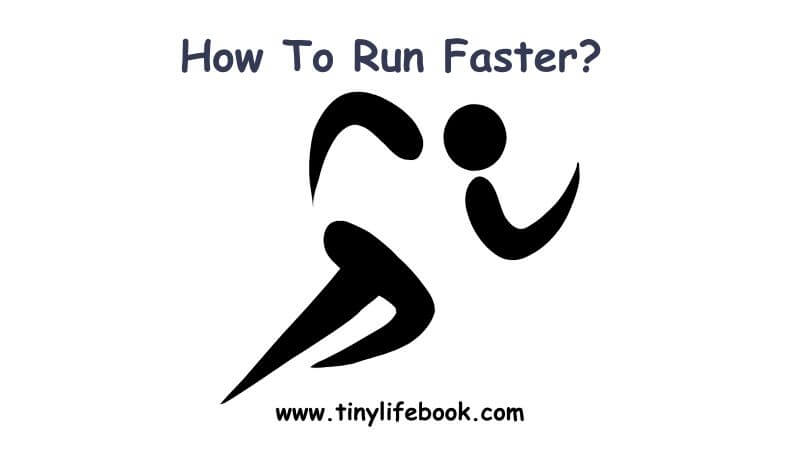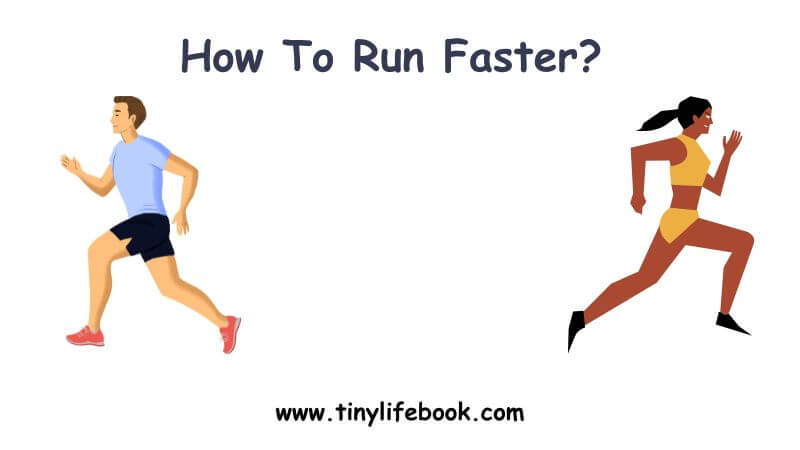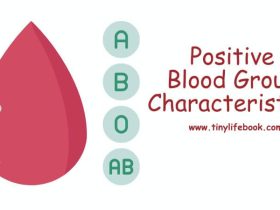Running faster is a goal shared by many athletes and fitness enthusiasts. Whether you’re training for a race or simply want to beat your personal best, increasing your speed is achievable with the right approach. In this guide, we’ll break down the key techniques and tips to help you run faster. From improving your form to incorporating strength training, we’ve got you covered.
1. Focus on Running Form
One of the most effective ways to run faster is by optimizing your running form. A good running form helps reduce wasted energy and lowers your risk of injury.
Key Points to Improve Running Form:
- Posture: Keep your back straight and shoulders relaxed. Engage your core to stay stable.
- Arm swing: Keep your arms bent at a 90-degree angle, swinging them forward and back, not across your body.
- Footstrike: Aim for a midfoot strike, as this helps in more efficient energy transfer.
- Stride length: Take quick, short steps instead of over-striding. Over-striding can lead to injuries and slow you down.
- Head position: Keep your head up, looking forward, and avoid tilting it down to watch your feet.
By maintaining proper form, you can improve your efficiency, allowing you to run faster without exerting too much energy. Source
2. Incorporate Interval Training
Interval training is a crucial element in learning how to run faster. It consists of alternating between periods of high-intensity running and recovery.
Benefits of Interval Training:
- Increased speed: Sprinting pushes your muscles to work harder, helping you build speed over time.
- Improved cardiovascular capacity: Alternating between fast and slow intervals increases endurance.
- Burns fat faster: The high-intensity nature of intervals accelerates fat loss, which can help you run more lightly and swiftly.
Sample Interval Training Routine:
- Warm up for 5–10 minutes with light jogging.
- Sprint at 85-90% of your maximum speed for 30 seconds.
- Jog or walk for 1 minute to recover.
- Repeat for 20–30 minutes.
This type of training challenges your body to adapt to faster speeds, ultimately making you a quicker runner.
3. Strength Training
Building strength is an essential component of how to run faster. Strong muscles help propel you forward with greater force, improving your speed and endurance.
Key Exercises for Runners:
- Squats: Strengthens your glutes, quads, and hamstrings, which are the primary muscles used in running.
- Lunges: Improve balance, coordination, and leg strength, allowing for a more powerful stride.
- Deadlifts: Build overall lower-body and core strength, helping you maintain posture during a run.
- Planks: A strong core is vital for stability, which can improve running efficiency and speed.
- Calf raises: Strong calves contribute to better push-off power when running, allowing you to maintain a faster pace.
Incorporating these exercises into your routine 2-3 times a week can greatly enhance your running performance. Source
4. Focus on Breathing Technique
Learning how to breathe effectively while running can have a big impact on your speed. When you breathe deeply, you supply your muscles with the oxygen they need to perform at their best.
Tips for Effective Breathing:
- Breathe deeply: Diaphragmatic breathing (belly breathing) is more efficient than shallow chest breathing.
- Inhale through your nose and mouth: Doing both allows you to maximize oxygen intake.
- Match your breathing to your stride: For example, try a 2:2 breathing pattern (inhale for two steps, exhale for two steps) to maintain rhythm.
Good breathing ensures that you stay relaxed, which is key when trying to run faster.
5. Incorporate Speed Drills

Speed drills, also known as strides or sprints, are short bursts of fast running that help your body get used to moving at higher speeds.
Speed Drills You Can Try:
- Strides: After a warm-up, run at 70-90% of your maximum speed for 20-30 seconds, then walk for 1-2 minutes. Repeat 4-6 times.
- Hill sprints: Sprint uphill for 10-20 seconds, then walk back down. This builds leg power and improves speed.
- Fartlek training: This involves varying your pace throughout your run. For example, alternate between 1-2 minutes of fast running and 2-3 minutes of a slower pace.
Incorporating these drills into your weekly training will help you develop the speed needed to run faster.
6. Nutrition and Hydration
What you eat and drink can play a significant role in how fast you run. Proper nutrition fuels your body, helping you perform better during training and races.
Key Nutritional Tips for Runners:
- Carbohydrates: Carbs are your body’s primary fuel source for running. Opt for complex carbs like whole grains, fruits, and vegetables.
- Protein: Protein is crucial for muscle repair and recovery, especially after speed workouts. Include lean meats, fish, eggs, or plant-based proteins in your diet.
- Healthy fats: Omega-3 fatty acids found in nuts, seeds, and fish can reduce inflammation and improve overall endurance.
- Hydration: Drink water throughout the day to stay hydrated, and consider a sports drink during longer, more intense training sessions to replenish electrolytes.
Fueling your body properly helps you perform at your best and recover more quickly from workouts.
7. Get Adequate Rest and Recovery

Pushing yourself too hard without adequate rest can lead to injury and slow your progress. Rest days are just as important as training days in learning how to run faster.
Why Rest Is Important:
- Muscle repair: Your muscles need time to recover and rebuild after intense workouts.
- Injury prevention: Overtraining increases the risk of injuries like shin splints or a runner’s knee.
- Performance boost: A well-rested body performs better, allowing you to hit your top speeds more consistently.
Aim for at least one or two rest days each week, and make sure you’re getting enough sleep each night.
Summary!
Learning how to run faster takes a combination of good form, targeted training, and proper recovery.
Focus on your technique, incorporate interval training and speed drills, build strength, and pay attention to your nutrition and recovery.
With dedication and consistency, you’ll find yourself reaching new speeds in no time.
We hope you find this article helpful and informative!
Also Read: Top 5 Dazzling Boating In Bangalore Places
Follow Us: Facebook | Instagram | Twitter | Pinterest













Leave a Reply